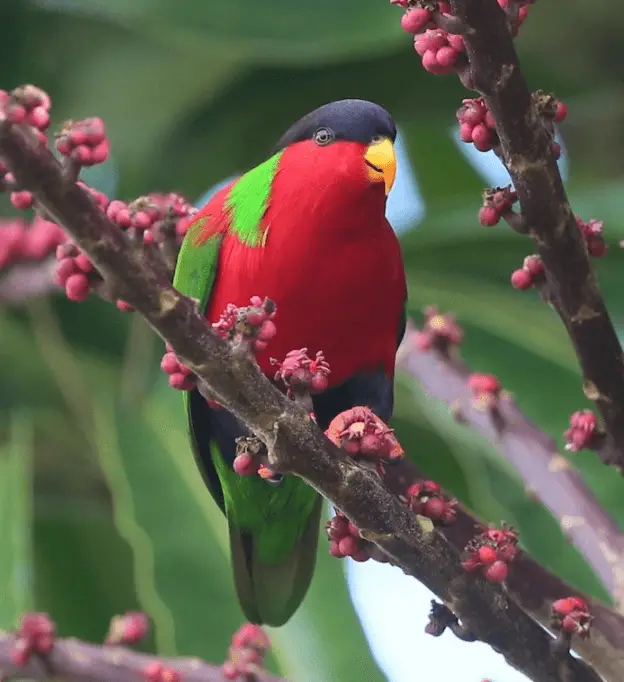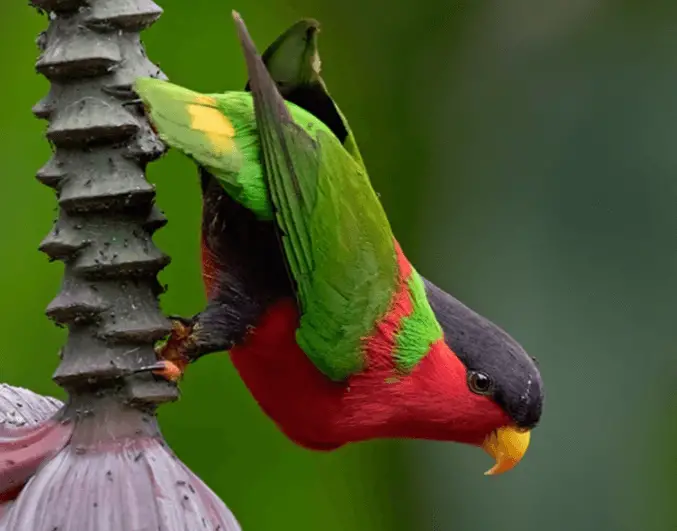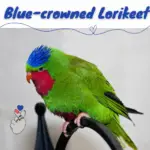
Collared Lory 20 cm; 71–92 g. Bill orange; crown above a line through eye glossy purplish-black, bordered on nape by elongated bright yellowish-green feathers;
back, wings, and tail green; face below the eye, upper back and undersides down to mid-belly red; lower belly blackish purple, green on vent and under tail-coverts; legs orange.
Collared Lory Female has paler, bluish forecrown, greener on the collar. Immature duller green and non-elongate on the nape, with darker bill and legs.
Monotypic.
Subspecies
Monotypic.
Distribution
Fiji, except S Lau Archipelago.
Habitat
Forested areas up to 1200 m or more, being plentiful in wetter windward areas, less so in leeward coastal farmlands; also plantations and tree-lined streets in villages and towns.

Movement
Seasonal movements were reported in some areas, in response to the annual availability of food, e.g. birds move into the Sigatoka Valley, Viti Levu when Erythrina trees bloom in Aug–Sept.
Diet and Foraging
Blossoms of coconut palms, Erythrina indica, and Spathodea campanulata; also fruits of cultivated mango (Mangifera indica) and soursop (Annona muricata).
Collared Lory
COURSE:dsflores
Sounds and Vocal Behavior
Collared Lory Calls include several chittering notes such as “tzreet”, given both from perch and in flight, and a more squabbling “tzriririt” when perched.
Breeding
Jul, Nov–Dec. Nest in a hole in a tree or stump, sometimes in rotting coconut still attached to the tree. Collared Lory Eggs two; in captivity, incubation c. 30 days, nestling period c. 9 weeks.
SOURCE:Marcus S Tarte
Conservation Status

Not globally threatened. CITES II. A BirdLife “restricted-range” species. Common in forests and wetter areas on Viti Levu and Vanua Levu; also common on 10 km² Makogai I; rare on Ngau possibly owing to nest-site competition from the common Prosopeia tabuensis.




















